Signature of immune-related metabolic genes predicts the prognosis of hepatocellular carcinoma
- PMID: 39654885
- PMCID: PMC11625796
- DOI: 10.3389/fimmu.2024.1481331
Signature of immune-related metabolic genes predicts the prognosis of hepatocellular carcinoma
Abstract
Introduction: The majority of liver cancer cases (90%) are attributed to hepatocellular carcinoma (HCC), which exhibits significant heterogeneity and an unfavorable prognosis. Modulating the immune response and metabolic processes play a crucial role in both the prevention and treatment of HCC. However, there is still a lack of comprehensive understanding regarding the immune-related metabolic genes that can accurately reflect the prognosis of HCC.
Methods: In order to address this issue, we developed a prognostic prediction model based on immune and metabolic genes. To evaluate the accuracy of our model, we performed survival analyses including Kaplan-Meier (K-M) curve and time-dependent receiver operating characteristic (ROC) curve. Furthermore, we compared the predictive performance of our risk model with existing models. Finally, we validated the accuracy of our risk model using mouse models with in situ transplanted liver cancer.
Results: By conducting lasso regression analysis, we identified four independent prognostic genes: fatty acid binding protein 6 (FABP6), phosphoribosyl pyrophosphate amidotransferase (PPAT), spermine synthase (SMS), and dihydrodiol dehydrogenase (DHDH). Based on these findings, we constructed a prognostic model. Survival analysis revealed that the high-risk group had significantly lower overall survival (OS) rates. Besides that, the ROC curve demonstrated the effective prognostic capability of our risk model for hepatocellular carcinoma (HCC) patients. Furthermore, through animal experiments, we validated the accuracy of our model by showing a correlation between high-risk scores and poor prognosis in tumor development.
Discussion: In conclusion, our prognostic model surpasses those solely based on immune genes or metabolic genes in terms of accuracy. We observed variations in prognosis among different risk groups, accompanied by distinct immune and metabolic characteristics. Therefore, our model provides an original evaluation index for personalized clinical treatment strategies targeting HCC patients.
Keywords: immunity; liver cancer; metabolism; prognostic model; risk score.
Copyright © 2024 Zhuo, Xia, Lan, Chen, Wang and Liu.
Conflict of interest statement
The authors declare that the research was conducted in the absence of any commercial or financial relationships that could be construed as a potential conflict of interest.
Figures
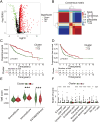
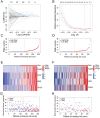
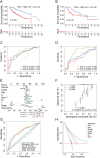
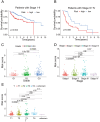
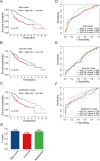

Similar articles
-
A Novel Amino Acid-Related Gene Signature Predicts Overall Survival in Patients With Hepatocellular Carcinoma.Cancer Rep (Hoboken). 2024 Jul;7(7):e2131. doi: 10.1002/cnr2.2131. Cancer Rep (Hoboken). 2024. PMID: 39041652 Free PMC article.
-
An immune-related gene signature for predicting survival and immunotherapy efficacy in hepatocellular carcinoma.Cancer Immunol Immunother. 2021 Apr;70(4):967-979. doi: 10.1007/s00262-020-02743-0. Epub 2020 Oct 21. Cancer Immunol Immunother. 2021. PMID: 33089373 Free PMC article.
-
Construction of a risk score prognosis model based on hepatocellular carcinoma microenvironment.World J Gastroenterol. 2020 Jan 14;26(2):134-153. doi: 10.3748/wjg.v26.i2.134. World J Gastroenterol. 2020. PMID: 31969776 Free PMC article.
-
Identification and validation of redox-immune based prognostic signature for hepatocellular carcinoma.Int J Med Sci. 2021 Mar 10;18(9):2030-2041. doi: 10.7150/ijms.56289. eCollection 2021. Int J Med Sci. 2021. PMID: 33850474 Free PMC article.
-
Mining Prognostic Biomarkers of Hepatocellular Carcinoma Based on Immune-Associated Genes.DNA Cell Biol. 2020 Apr;39(4):499-512. doi: 10.1089/dna.2019.5099. Epub 2020 Feb 18. DNA Cell Biol. 2020. PMID: 32069130 Review.
Cited by
-
Dissecting the multi-omics landscape of TEAD1 in hepatocellular carcinoma: cycle regulation and metastatic potential.Front Immunol. 2025 Jun 5;16:1567969. doi: 10.3389/fimmu.2025.1567969. eCollection 2025. Front Immunol. 2025. PMID: 40539054 Free PMC article.
References
MeSH terms
Substances
LinkOut - more resources
Full Text Sources
Medical

